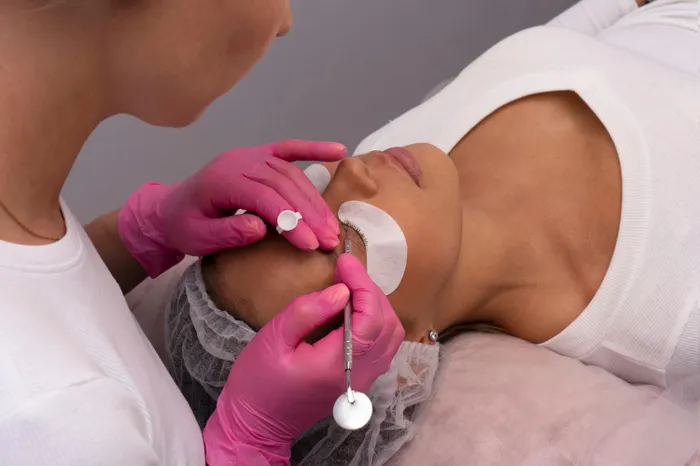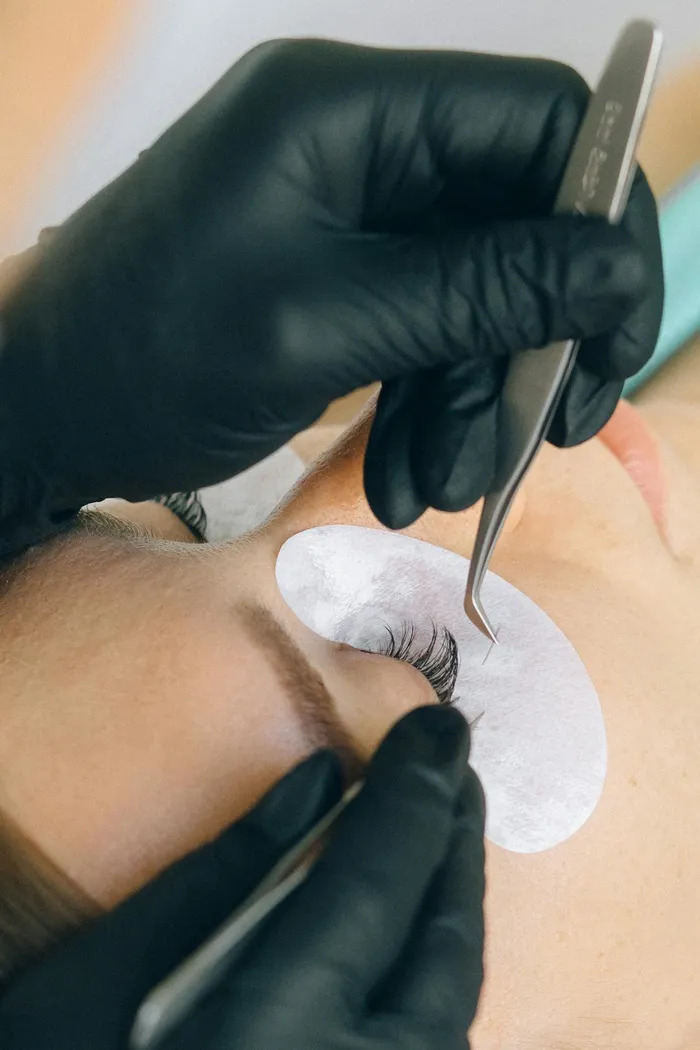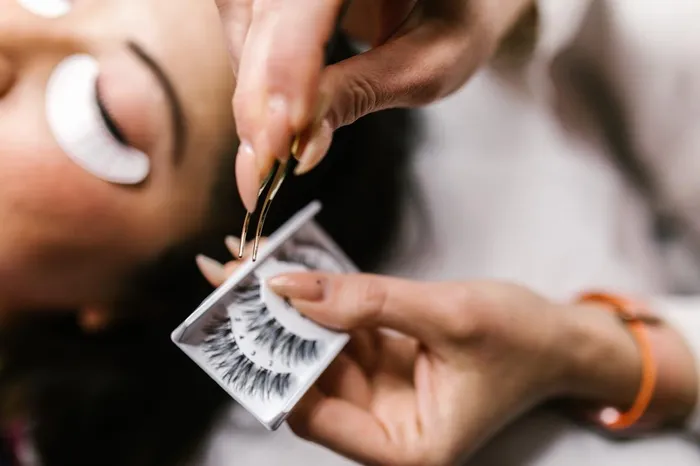A comprehensive guide to eyelash extensions: Types, application and maintenance

Eyelash extensions have become very popular.
Image: Freepik
If you’re a beauty enthusiast or just want to make your morning routine a little easier, eyelash extensions might be just what you need.
They give you instantly fuller, longer lashes without having to slap on coats and coats of mascara every morning.
So many women rave about lash extensions, and just like manis, pedis and hair care, they have become a part of their regular monthly beauty maintenance.
If this is something you find appealing and keen to give a try, it’s best to know what you’re getting yourself into.

Eyelash extensions are glued one by one to your natural eyelashes using a medical-grade adhesive.
Image: Nataliya Vaitkevich / Pexels
From the different types of lashes to how to take care of them, here’s everything you need to know.
Eyelash extensions are semi-permanent fibres, typically synthetic, silk, or mink, that are glued one by one to your natural eyelashes using a medical-grade adhesive.
Unlike strip lashes or temporary lashes, extensions are tailored to each lash and meant to last through the natural lash cycle, shedding gradually over weeks.
Lash extensions come in a variety of materials, lengths, thicknesses, and curls.
Choosing the right kind depends on your natural lashes, the look you want to achieve, and maintenance preferences.
Types of material
Synthetic: The most common and affordable. These are firm, glossy, and provide a dramatic look. Ideal for bold and dense lash styles.
Silk: Softer and more flexible than synthetic lashes with a semi-matte finish. They’re lightweight and good for a more natural appearance.
Mink: Made from real mink fur, or faux mink for an animal-friendly option, these lashes are incredibly soft, feathery, and natural-looking. However, they are typically more expensive.
Lash styles
Classic: One extension is applied to each natural lash. Great for adding length and a bit of fullness while maintaining a natural look.
Volume: Multiple thinner extensions are fanned out and applied to a single natural lash. Ideal for sparse lashes or dramatic, fluffy volume.
Hybrid: A mix of classic and volume lashes. Perfect for a textured, semi-dramatic look.
Mega volume: Uses even thinner lashes than volume and applies more per natural lash. For maximum drama and density.

There are different types of lashes.
Image: RDNE Stock project / Pexels
Curl types
J Curl: Most natural-looking, mimics the natural curve of lashes.
B and C Curl: Slightly curlier than J, the C curl is most commonly used for a noticeable lift.
D Curl: Very dramatic and curly, ideal for deep-set or downward-pointing lashes.
L Curl: Has a flat base with a strong upward curl; great for hooded or monolid eyes.
The application process
Applying eyelash extensions typically takes one to three hours, depending on the style and technician. Here’s a breakdown of what you can expect.
Consultation: Your lash technician assesses your natural lashes, discusses desired results, and helps you choose the best style.
Preparation: Your lower lashes are taped down, and your upper lashes are cleaned to remove oil or makeup residue.
Application: Individual lashes are applied using tweezers and adhesive. You lie still with your eyes closed.
Curing and final touches: After the application, the lashes are dried and checked for comfort and symmetry.
Maintenance and aftercare
Proper care is essential to prolong the life of your extensions and keep your natural lashes healthy.
Do’s:
- Brush your lashes daily with a clean spoolie to keep them untangled.
- Clean lashes gently three to four times a week with an oil-free lash cleanser to remove buildup.
- Sleep on your back or use a silk pillowcase to reduce friction.
- Schedule fills every two to three weeks to replace lost lashes and maintain a full look.
Don'ts:
- Avoid oil-based products around the eyes because they can break down the glue.
- Don’t rub, pull, or tug at your extensions.
- Avoid waterproof mascara and eyelash curlers, which can damage both extensions and natural lashes.
- Stay away from saunas and steam rooms for the first 24–48 hours after application to allow the glue to fully cure.
Pros and cons of eyelash extensions
Pros
- Enhances eyes instantly
- Reduces the need for daily makeup
- Customizable styles
- Long-lasting with proper care
Cons
- Requires maintenance and cost
- Potential for irritation or allergic reaction
- Risk of damaging natural lashes if improperly applied or maintained
IOL Lifestyle
